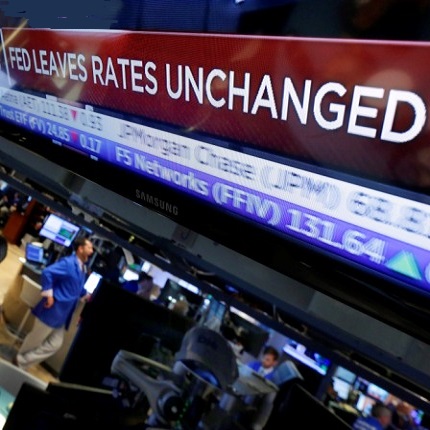 Federal Reserve appears to be in no hurry to raise interest rates — it not only left its federal funds rate unchanged at its June meeting, it also lowered its forecast pace for future rate increases.
Federal Reserve appears to be in no hurry to raise interest rates — it not only left its federal funds rate unchanged at its June meeting, it also lowered its forecast pace for future rate increases.
Most Fed officials expect two small increases this year in the federal funds rate, which is a benchmark used for interest rates on short-term loans. But a growing number expect the Fed to raise rates only once this year.
The federal funds rate is now at 0.25 percent to 0.5 percent. That’s no longer zero, as it was for seven years following the financial crisis, but it’s still unusually low. The Fed wants to see further improvements in the jobs market before it raises its rate again.
“July is still a possibility if employment data is better this month, but it is more likely the committee will now wait until the third quarter or later,” said Curt Long, chief economist of the National Association of Federal Credit Unions.
“If we get through the uncertain summer months and the data confirms the U.S. expansion is intact, we think a September rate hike is likely,” said Joe Seydl, capital markets economist for J.P. Morgan Private Bank. “Still, at a pace of one rate hike a year, the Fed is progressing like a snail.”
“I can’t give you a formula,” Federal Reserve Chair Janet Yellen said at a news conference when asked what the Fed needs to see in the labor market before it raises rates again. “I don’t know what the timetable is going to be to gain that assurance,” she said.
But it’s safe to say that the Fed won’t raise rates if the next jobs report is as weak as May’s, when the economy added only 38,000 jobs. Yellen, however, said it’s important not to put too much emphasis on one month’s jobs data. Plus, the Fed looks at other labor market data besides the monthly jobs report.
“It’s not impossible that by July, for example, that we would see data that would lead us to believe that we’re on a perfectly fine course,” Yellen said.
Meanwhile, there are international developments — such as next week’s referendum in the United Kingdom over whether to leave the European Union — that could affect the Fed’s rate decisions. Yellen acknowledged this so-called “Brexit” was one of the economic uncertainties discussed by the Fed in this month’s meeting.
Plus, the Fed’s definition of what normal interest rates should be appear to be changing. The median projection for the federal funds rate at the end of 2017 is now only 1.6 percent, down from 1.9 percent at the Fed’s April meeting. The projection for the end of 2018 is now only 2.4 percent, down from 3 percent. And the Fed’s projection for longer-run interest rates is 3 percent, down from 3.3 percent.
“Even when the lingering effects of the financial crisis and other economic headwinds diminish, there may be persistent factors at work, such as slower productivity growth, that will convince the Fed to keep interest rates lower than they had been in the past. Low federal funds rates could be part of the new normal,” Yellen said.
Source: SFBJ

